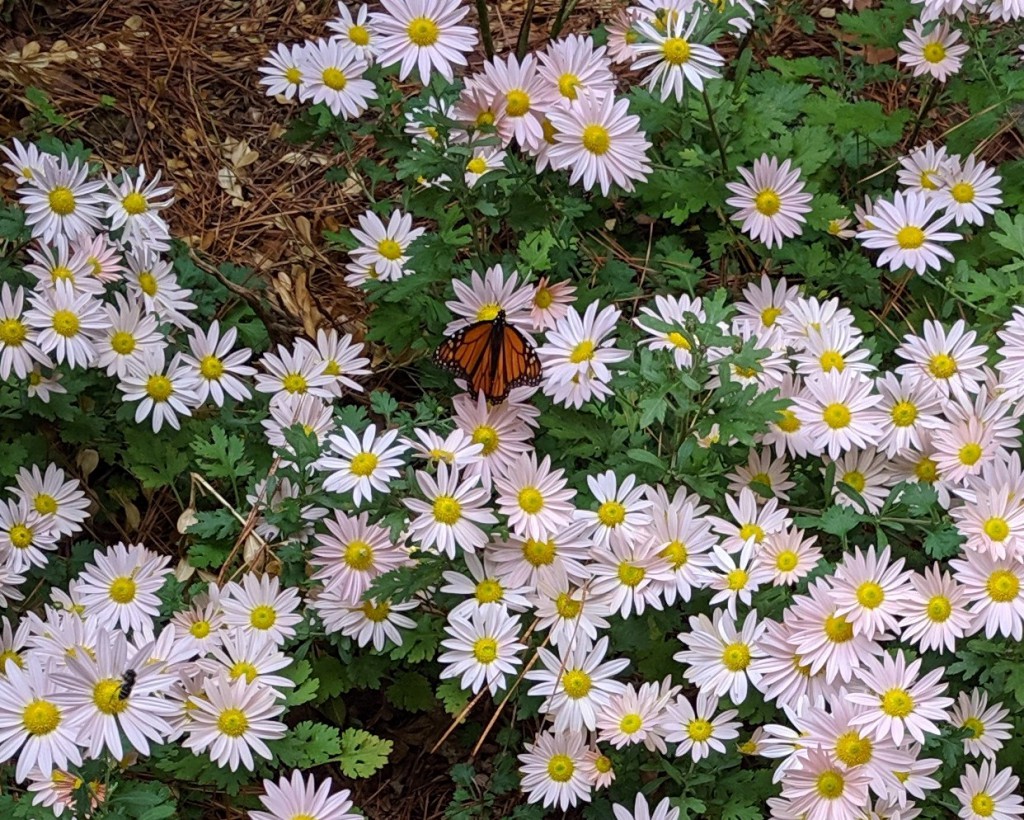written by Pam Rentz, Fulton County Master Gardener Extension Volunteer

“If you build it, he will come.”
It worked in the film classic Field of Dreams. Kevin Costner played Ray Kinsella, an Iowa farmer who heard a voice whisper those words to him one evening while he was walking through his cornfield. A baseball fan, Ray took it as a sign that if he had faith and went ahead and built a baseball diamond on his farm – even plowing under part of the corn crop – the great “Shoeless” Joe Jackson would show up. He went ahead and put together the field and oh my, did the baseball greats from the past show up.
So, what does a movie about baseball, albeit one that was nominated for three Academy Awards, have to do with monarch butterflies coming to your yard?
The eastern monarch butterfly population is in decline and many people are motivated to help by creating their own version of a field of dreams by planting a butterfly garden.
However, sometimes we hear: “Why am I not seeing any monarch butterflies?”
Just as a baseball field has requirements —three bases, a home plate, the pitcher’s mound, etc. —there are features that a successful butterfly habitat includes. While there are no guarantees (and know that it may take some time), these tips should help.
Bring monarchs to your garden
Location matters. Butterflies and other pollinators love the sun and so do their favorite flowers. They also need some protection from the wind.
Butterflies love a buffet. Asters, Anise Hyssop, bee balm, Black-eyed Susan, coreopsis, Joe Pye (a.k.a. Swallowtail Delight), lantana, milkweed, purple coneflowers, sunflowers, and zinnias are favorites.
No milkweed, no monarch babies. Monarchs will happily sip nectar from different species of milkweed and other plants. However in Georgia, the milkweed (Ascleperis tuberosa) is the host plant for their caterpillars. Check online to see what the native milkweeds for your area are. Also, remember young’uns like to eat. One or two plants probably won’t be enough. The more milkweed, the better chance that you’ll see monarchs and eventually find their tiny pinhead-size eggs and larvae.
Beware tropical milkweed. Tropical or exotic (non-native) milkweed (Asclepias curassavica) actually harms the monarchs, according to Monarch Joint Venture. Instead of migrating to overwintering sites, year-round tropical milkweed encourages monarchs to linger, unlike the native North American milkweeds that die back. Winter larvae feeding on the tropical milkweed face multiple threats, including a higher chance of becoming infected with Ophryocystis elektroscirrha (OE) parasites. Tropical milkweed should be cut back in the winter and fall months in the southern U.S.
No insecticides. Insecticides sprayed to control mosquitoes also control butterflies, bees, hummingbirds and more.
It may take time, but the monarchs, along with the other butterflies and pollinators, will come.
Resources
U.S. Fish & Wildlife Service: Monarch Butterfly
Project Milkweed Xerces Society
https://www.fws.gov/midwest/news/PollinatorGarden.html
UGA Extension: Environmental Enhancement with Ornamental Plants: Butterfly Gardening